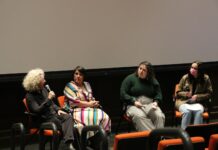Author: Ian Mariani
The city of Los Angeles annually spends around $7 million destroying artwork in the community. Or at least, that is how local street artist sensation Saber sees it. Since 2002 Los Angeles has included murals, like the massive record-holding one by Saber in the L.A. River from 1997, in a moratorium on private property artwork. Due to efforts from Saber, the L.A. City Council took the first step last month toward changing that law.
In a unanimous vote, the Council decided to begin the process of separating murals from the previously indiscriminate ordinance, reverting to an older precedent. Originally, the L.A. ordinance had legally separated murals from the 1986 prohibition of outdoor advertisements on private property without proper permits. But in the early 2000s, a lawsuit invoked equal protection and erased any line between advertisements and street art. As the law stands now, murals can be approved on a case-by-case basis but are restricted from having more than three percent of the artwork be actual text.
While no timetable was given, the public support of the measure suggests that this is not a push that will be allowed to fizzle. After earlier efforts to bring about this change slowed, Saber took the issue in a grassroots direction by starting a petition that gathered, as of last month, over 6,000 signatures.
His argument for the policy change is not in just an invocation of free artistic expression, it is an appeal to frugality. “In this time of economic hardship, the city’s tax dollars could be used differently,” Saber said. “Currently, resources are used by law officials to threaten, harass and fine building owners . . . I think this current situation sucks.”
Last April, when the Museum of Contemporary Art (MOCA) opened their recent exhibit, “Art in the Streets,” which included pieces from internationally renowned street artist Banksy, the LAPD voiced loud criticism. Seen as an acceptance of graffiti as a legitimate form of art, the LAPD publicly criticized the MOCA exhibition in an attempt to fight what they saw as an encouragement of illegal street art.
Once referred to as the “mural capital of the world,” Los Angeles’ initiative to reinstate private murals without permit has been seen by Saber and the greater street art community as a victory. “Art is subjective; as long as it’s not vulgar, it’s only up to the artist and the building owner,” Saber said. It is only a matter of vigilance on the side of the street art supporters to see the voted change through.
This article has been archived, for more requests please contact us via the support system.
![]()






































